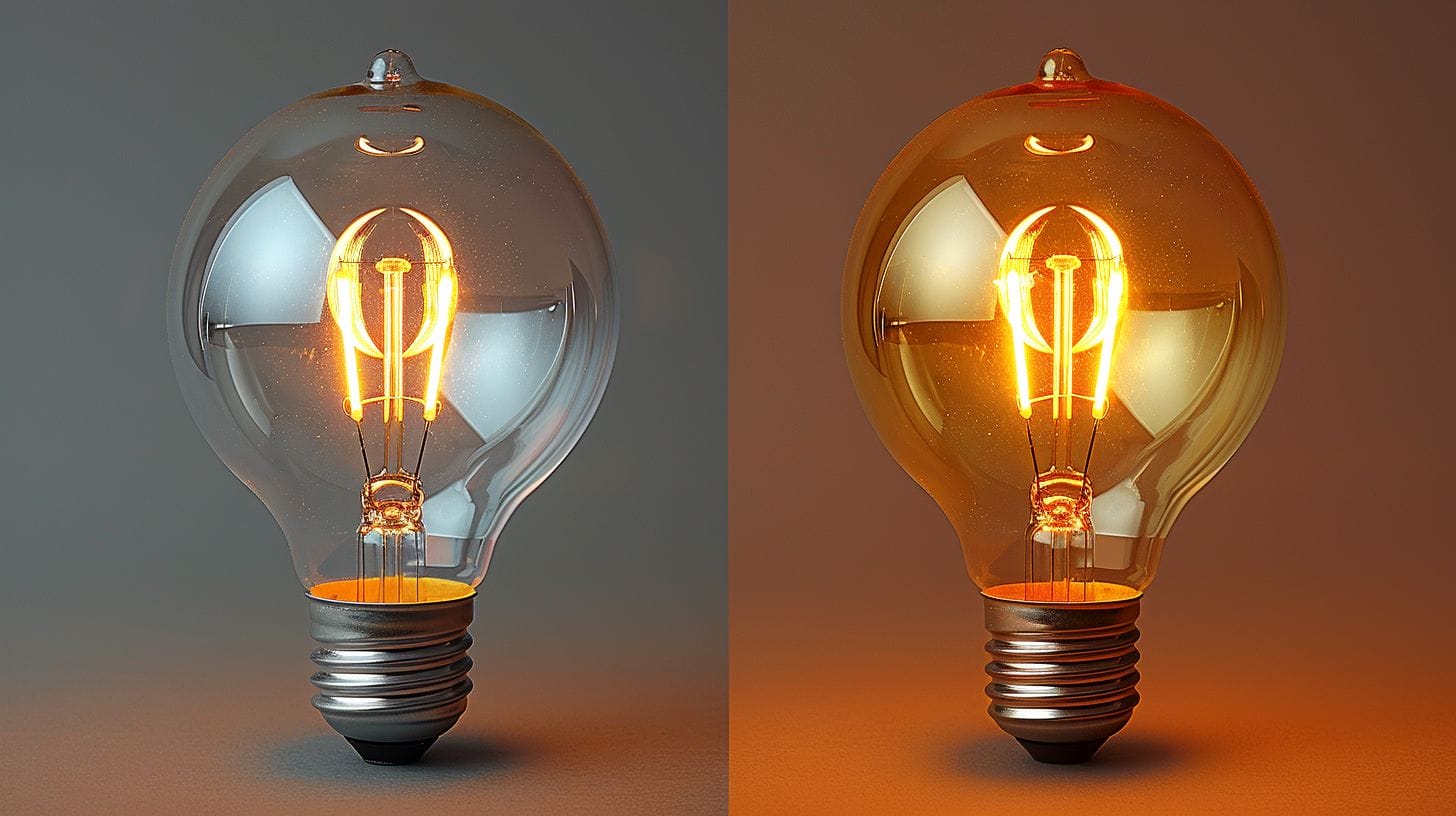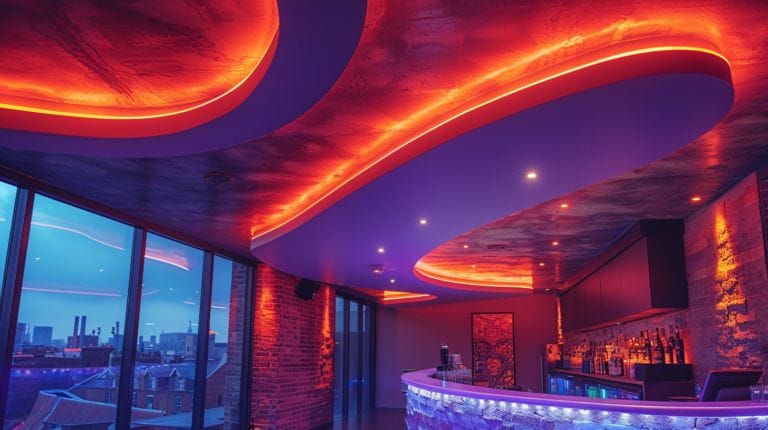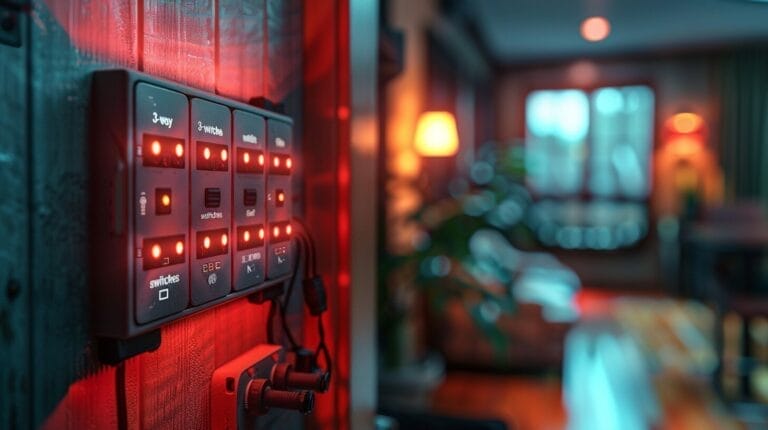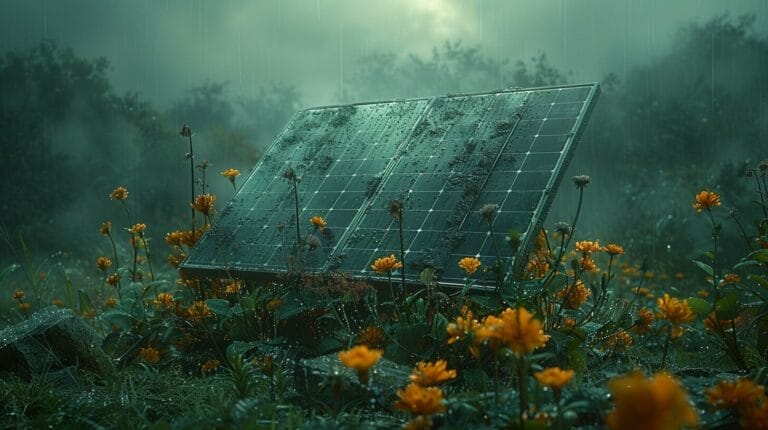6W LED Light Equivalent: A Guide to Light Bulb Conversion
In the world of lighting, deciphering the jargon can feel like navigating a maze blindfolded. However, with this guide, we aim to shed light on the topic of 6W LED light equivalents, demystifying the complexities of bulb conversion and making this knowledge accessible for commercial buyers.
Whether you’re a seasoned lighting aficionado or a newcomer to the realm of luminescence, this illuminating journey towards a brighter and more energy-efficient future will prove enlightening.
Key Takeaways
- 6W LED bulbs are equivalent to 40W incandescent bulbs, offering energy savings and comparable brightness.
- LEDs outperform CFL, fluorescent, halogen, sodium, and metal halide bulbs in energy efficiency.
- Choose 6W LEDs based on lumens and traditional wattage for optimal energy efficiency, referring to this guide for the best options.
- Installing a 6W LED bulb is a straightforward process, leading to long-term electricity cost savings.
Understanding the Basics: Making Sense of Light Bulb Terminology
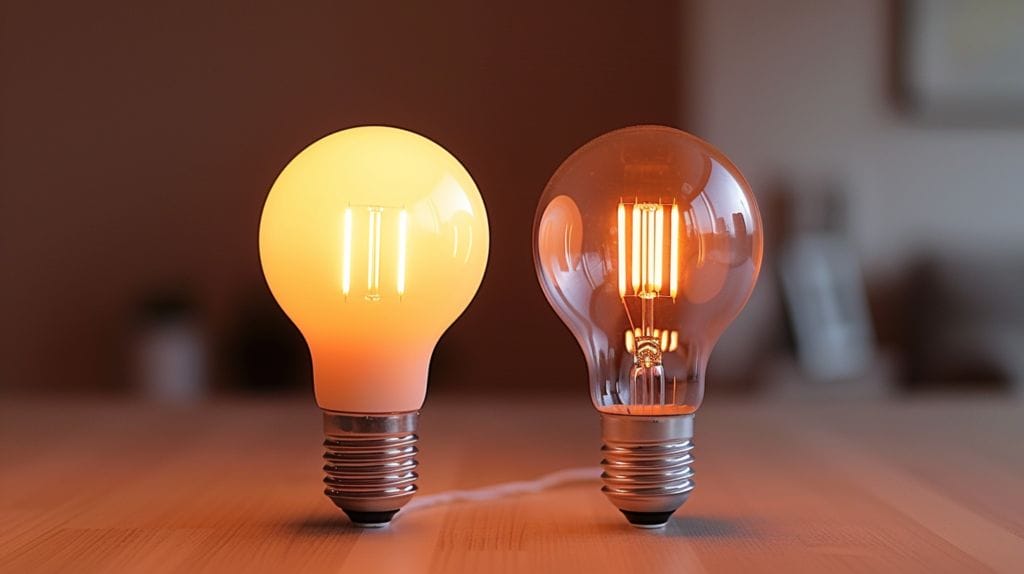
Understanding light bulb jargon like wattage, lumens, and equivalence is essential for navigating the world of lighting efficiently, especially as it applies to commercial and retail settings.
In the past, wattage was directly related to the brightness of a bulb in the incandescent era. However, with the introduction of LED bulbs, wattage now refers to the amount of power a bulb consumes rather than its brightness. This shift is significant when comparing traditional incandescent bulbs to energy-efficient LED alternatives, especially considering a 150-watt incandescent bulb produces much less light per watt than its LED counterparts.
- Lumens, which measure the actual brightness emitted by a bulb, have become the new buzzword in the realm of lighting. They measure the actual brightness of a light bulb, providing a more accurate representation than wattage and showing how bulbs vary in the amount of visible light they emit.
- LED bulbs, known for their energy efficiency, produce the same amount of light as incandescent bulbs but with significantly lower wattage. This means that a lower wattage LED bulb can offer the same amount of brightness, if not more, than even a 100-watt incandescent bulb, showcasing how lumens vary in LED and incandescent lighting.
- Equivalence is another term to consider when deciphering light bulb specifications, especially comparing the lumens of light between an efficient LED and a traditional incandescent bulb. It indicates the wattage of an incandescent bulb that would produce similar brightness to the LED bulb in question, typically around 2600 lumens for high-quality models.
Getting Specific: 6W LED Light Equivalent in Traditional Incandescent Bulbs
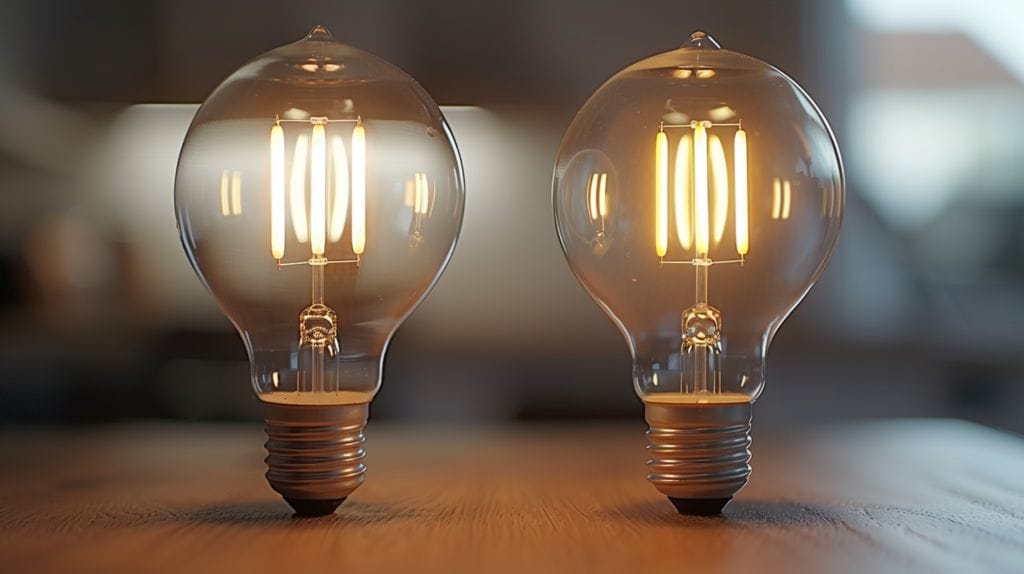
How can we determine the equivalent wattage of a 6W LED light bulb in traditional incandescent bulbs? Understanding the brightness factor, often measured in lumens, is key, especially when considering the efficiency of a 150-watt incandescent vs. a light bulb with energy-efficient characteristics.
LED bulbs. A 6W LED bulb is roughly equivalent to a 40W incandescent bulb, showcasing the energy-efficient nature of LED technology and the principle that LED bulbs require much less energy for the same amount of light, approximating 800 lumens.
Making the switch from traditional incandescent bulbs to 6W LED lights not only saves energy but also reduces electricity costs. Embracing this change to efficient LED bulbs, which emit visible light more efficiently than incandescent bulbs, is a step towards a more sustainable future.
While a 6W LED bulb may seem low in wattage, its brightness factor shines through, emitting more visible light when compared to its incandescent counterparts. The lumens produced by a 6W LED bulb are comparable to, if not better than, those of a 60 watts incandescent bulb, demonstrating the ability of LEDs to emit a similar amount of visible light at a fraction of the wattage.
Beyond Incandescent Bulbs: Comparing 6W LED with CFL and Fluorescent Lights

The 6W LED light bulb stands out for its energy efficiency, consuming significantly less power than traditional fluorescent lights while providing comparable brightness levels.
In contrast, CFL bulbs are known for their lower upfront cost compared to LED bulbs. However, CFLs contain small amounts of mercury, making their disposal more complicated and potentially hazardous, unlike their efficient LED counterparts. Additionally, CFLs may take a moment to reach full brightness, unlike LEDs which instantly illuminate to their full capacity.
Traditional fluorescent lights have been widely used for their brightness, but they aren’t as energy-efficient as LEDs. Fluorescent lights also contain mercury vapor, posing environmental concerns and requiring proper disposal methods.
Exploring Other Bulb Types: Halogen, Sodium, and Metal Halide
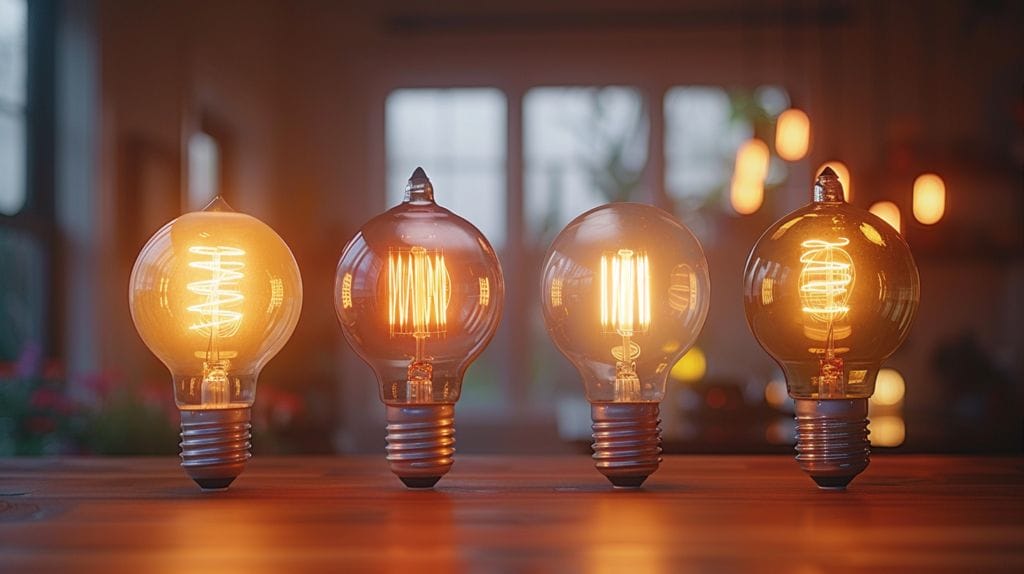
- A halogen bulb typically requires more power, with a 35W halogen bulb being equivalent in brightness to a 6W LED.
- Sodium bulbs, such as high-pressure sodium lamps, are known for their energy efficiency. A 6W LED can be as bright as a 50W high-pressure sodium bulb.
- Metal halide bulbs, known for their brightness and color rendering, are part of the bulbs with energy-efficient and longer-lasting options. A 6W LED light is comparable in brightness to a 35W metal halide bulb.
LED bulbs stand out for being energy-efficient and longer-lasting compared to halogen, sodium, and metal halide options, making them a popular choice in both commercial and retail environments, with brightness levels reaching approximately 1600 lumens. When looking to measure brightness, it’s essential to consider lumens rather than wattage to ensure an accurate comparison between efficient LED bulb types and traditional light bulbs.
– Can I Use LED Lights as a More Energy-Efficient Alternative?
Yes, you can definitely use LED lights as a more energy-efficient alternative. When calculating LED light electrical usage, you’ll find that they consume much less energy than traditional incandescent or fluorescent bulbs. Not only do they save on electricity costs, but they also have a longer lifespan, making them a smart choice for eco-friendly lighting.
Practical Guide: Choosing and Installing Your 6W LED Bulb
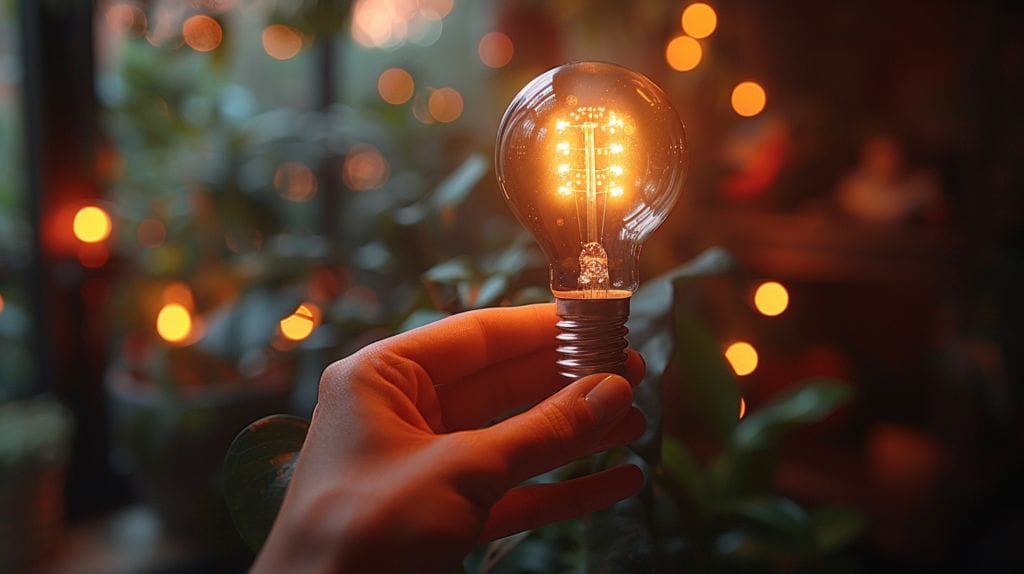
When selecting a 6W LED bulb, focus on energy consumption and efficiency, noting how its output can vary significantly from that of a 60-watt incandescent bulb while emitting the same amount of visible light. Look for bulbs with high energy efficiency ratings to save on electricity costs in the long run.
Additionally, consider the color temperature of the bulb to ensure it aligns with the ambiance you want to create, especially when comparing efficient LED bulbs, capable of emitting around 800 lumens, to traditional light options like a 90-watt incandescent bulb.
Once you have chosen the perfect 6W LED bulb, installing it is a straightforward process. Make sure the power is switched off before replacing the traditional light bulb with an LED bulb. Simply untwist the old bulb and screw in the new LED bulb. Ensure it is securely in place and turn the power back on to enjoy the energy-efficient lighting.
Conclusion
In conclusion, understanding the equivalent wattage of a 6W LED light in traditional incandescent bulbs and how these efficient LED options can better serve your home is essential for making informed decisions.
Whether you’re looking to save energy, reduce your electricity bill, or simply upgrade your lighting, knowing the right conversion will guide you towards the best choice for your needs.
So go ahead and make the switch to a more energy-efficient and cost-effective lighting solution by replacing incandescent with a 6W LED bulb today!
Frequently Asked Questions
What is the equivalent wattage of a 6W LED light bulb?
A 6W LED light bulb is equivalent to a 60-watt incandescent bulb.
What does wattage mean?
Wattage refers to the amount of power consumed by a light bulb, and understanding this can help in retail environments to showcase energy savings.
What is a lumen?
A lumen, which is a measurement unit of brightness, helps to accurately measure energy efficiency when comparing different light bulb types. It determines how much light a bulb produces.
How do I calculate the LED watt equivalent to a traditional incandescent light bulb?
You can use a conversion chart to find the LED watt equivalent to a traditional incandescent bulb. Simply compare the lumen output of the LED bulb to the lumens of light produced by an incandescent bulb to understand the efficiency and brightness equivalency.
Can I replace a 60-watt incandescent bulb with a 6W LED bulb?
Yes, you can replace a 60-watt incandescent bulb with a 6W LED bulb, which will emit the same if not more visible light. The 6W watt LED bulb will provide the same level of brightness as traditional light bulbs while consuming less energy to generate light.

